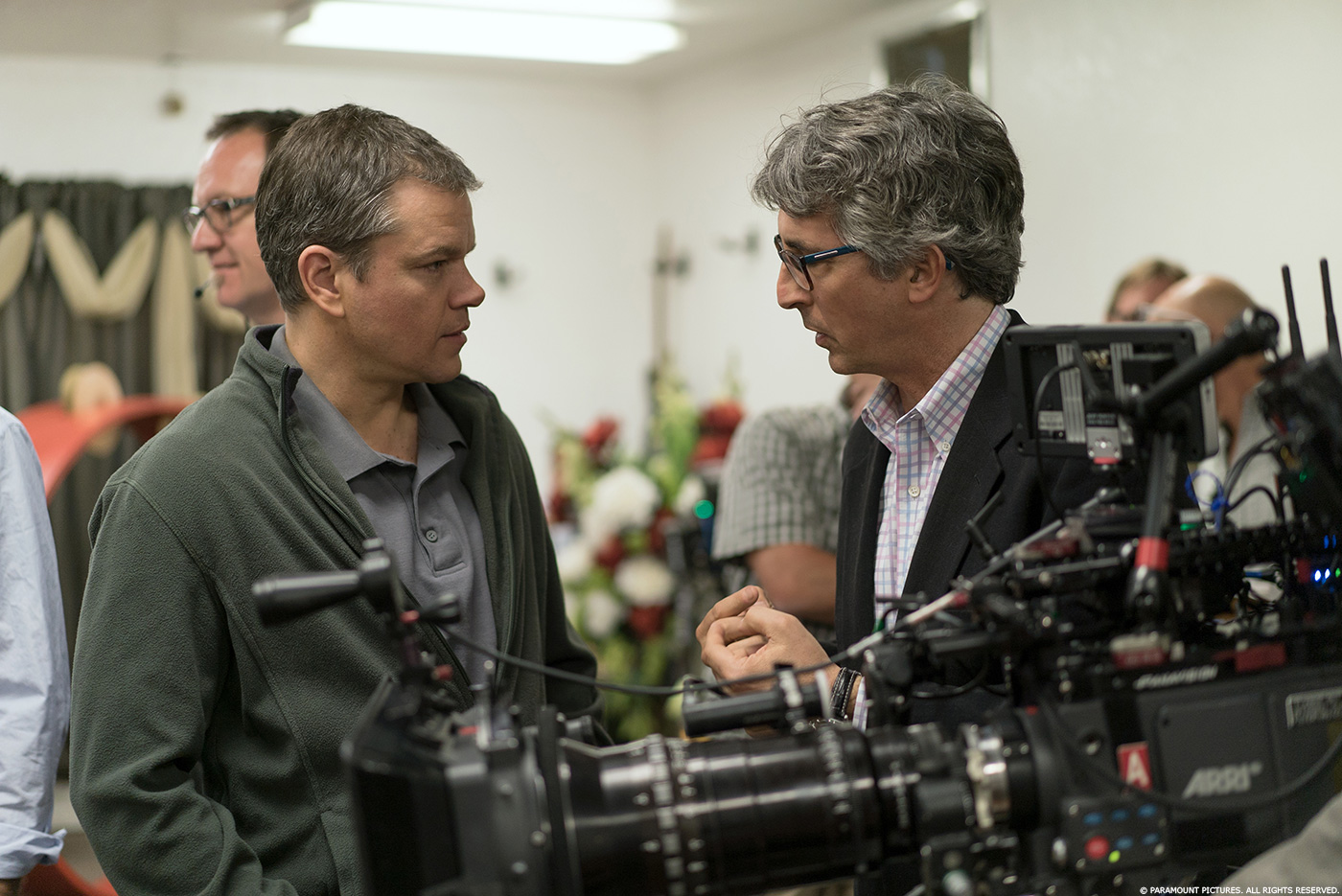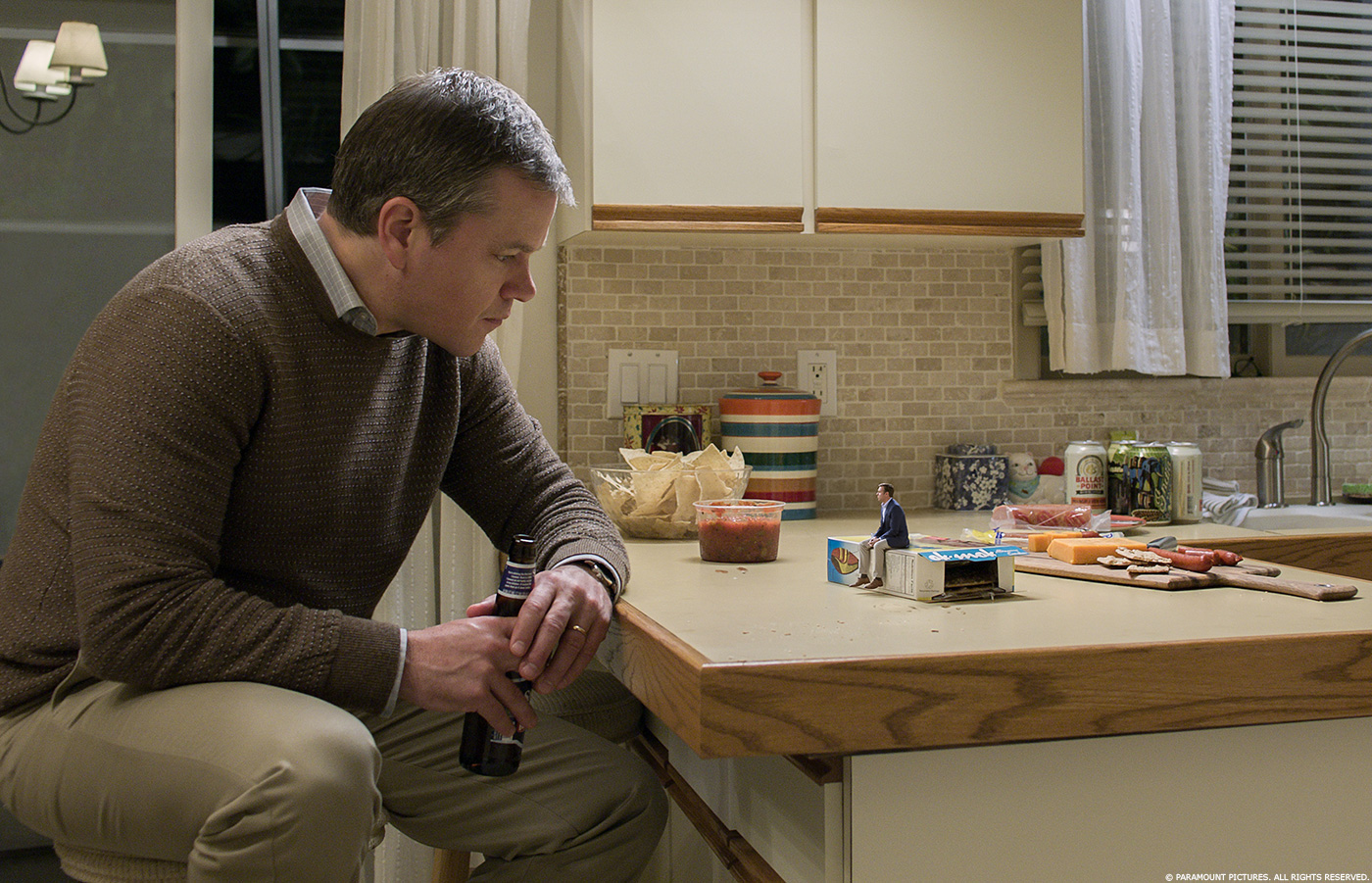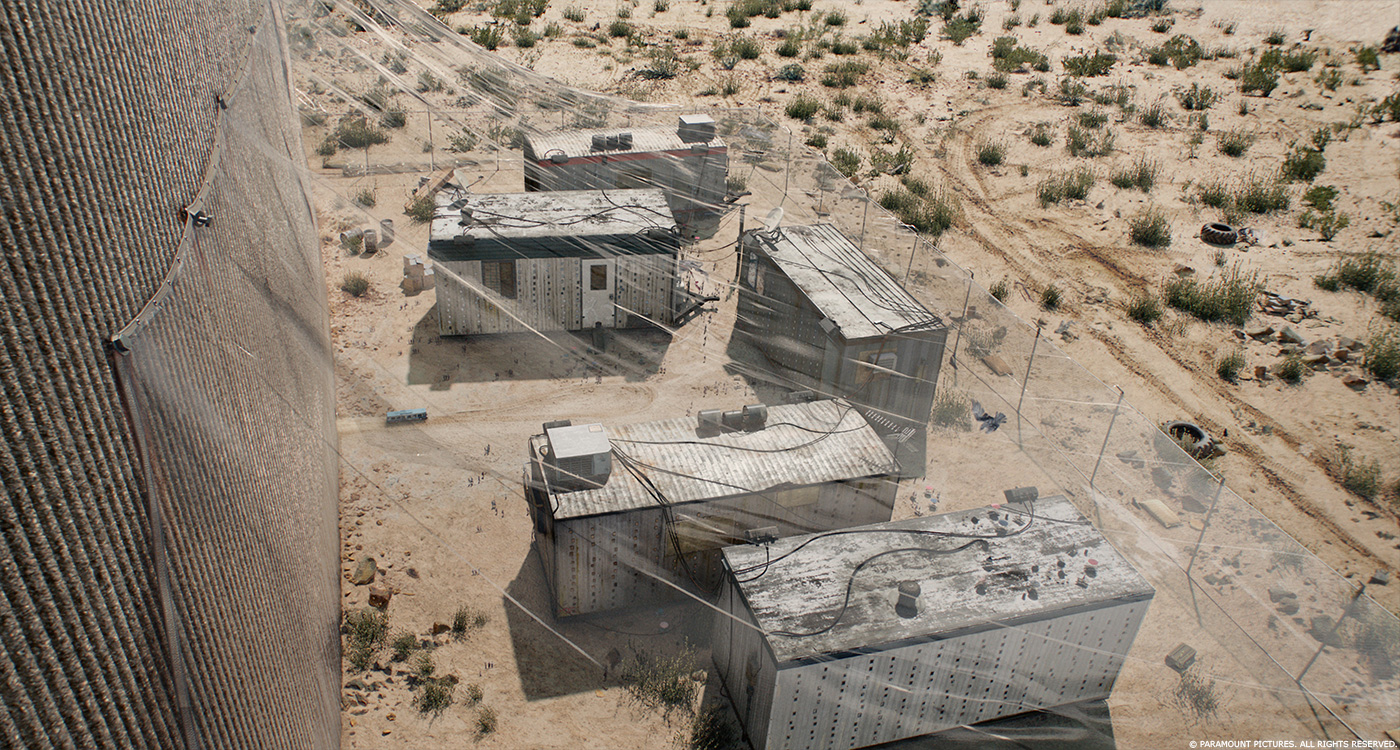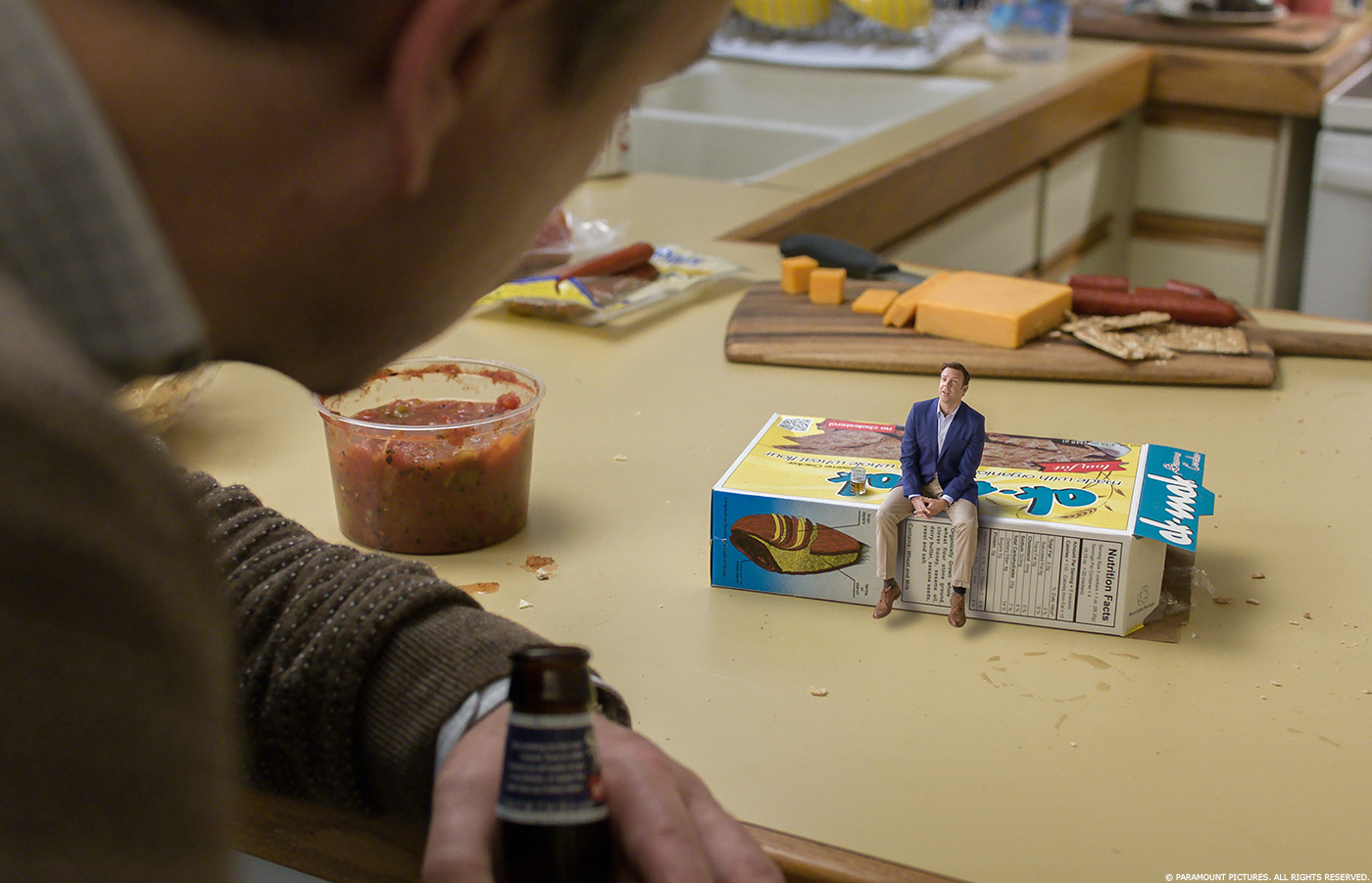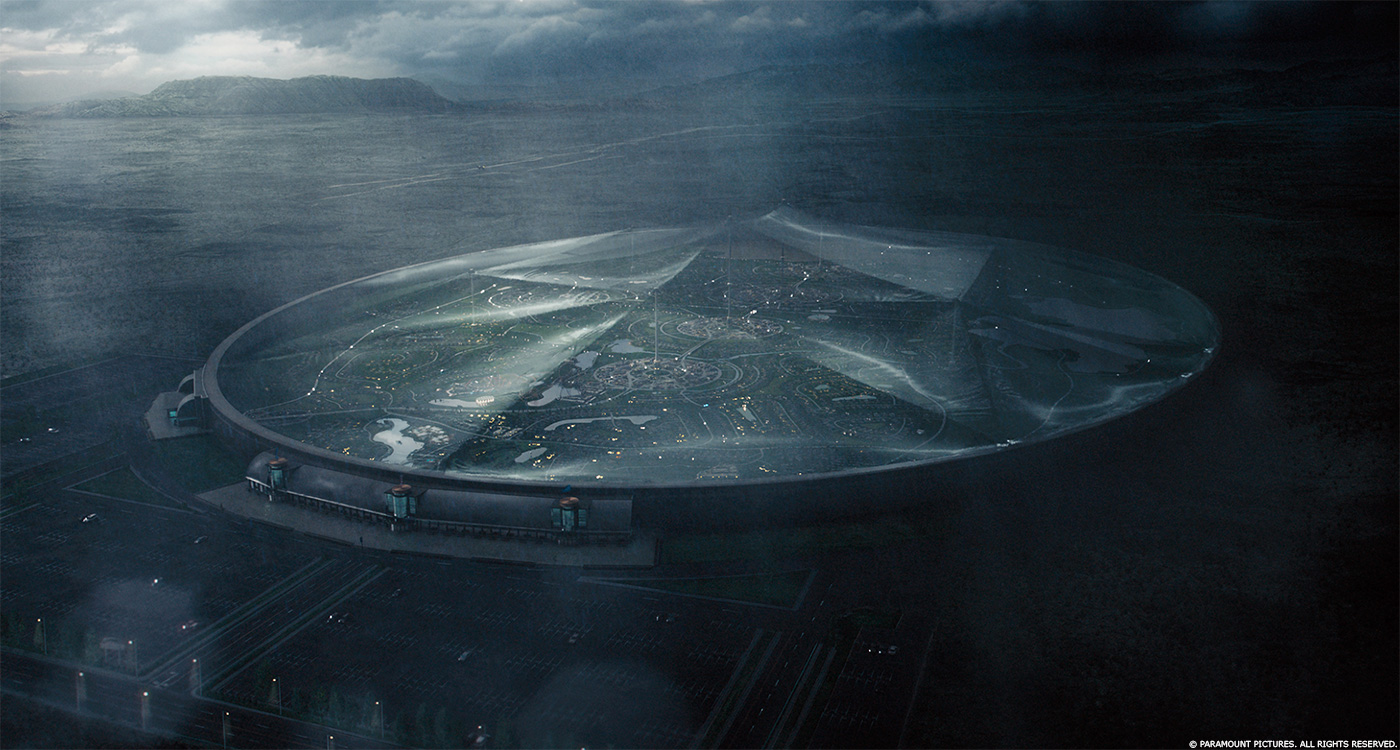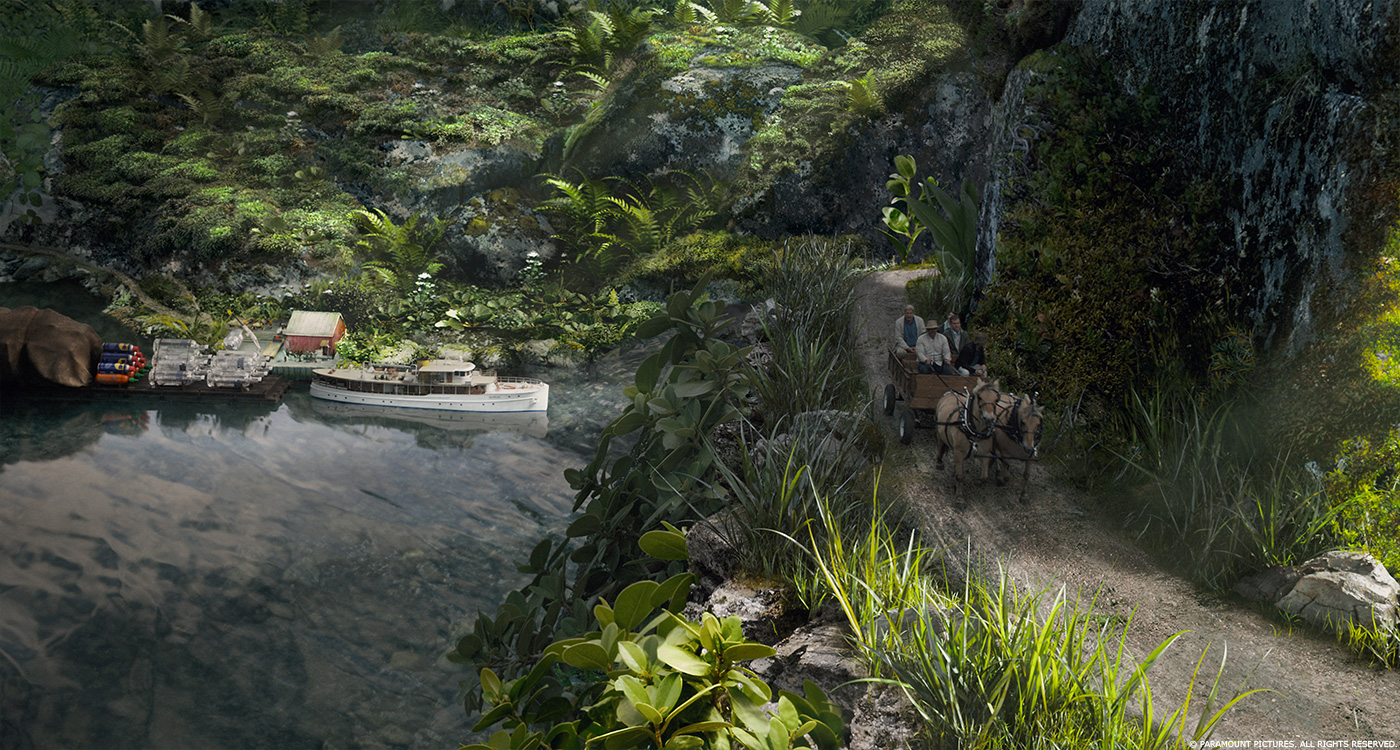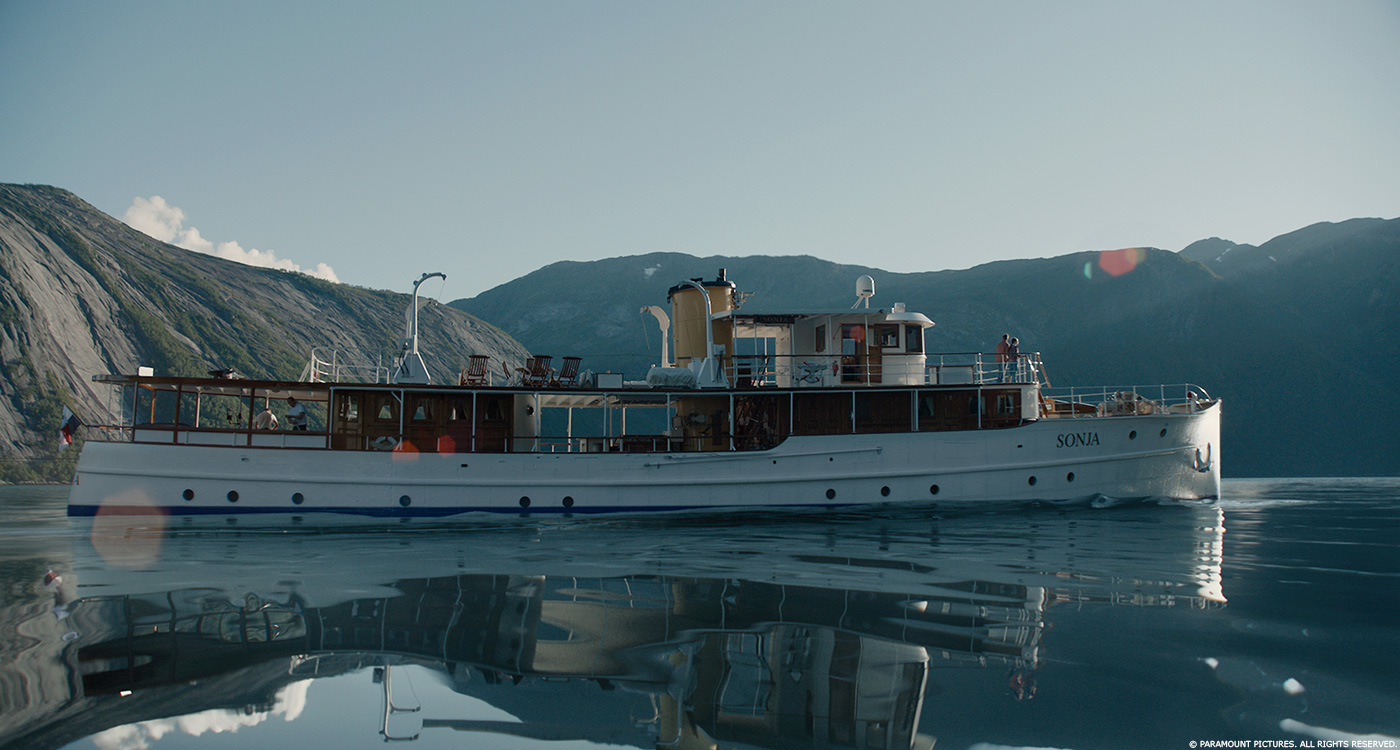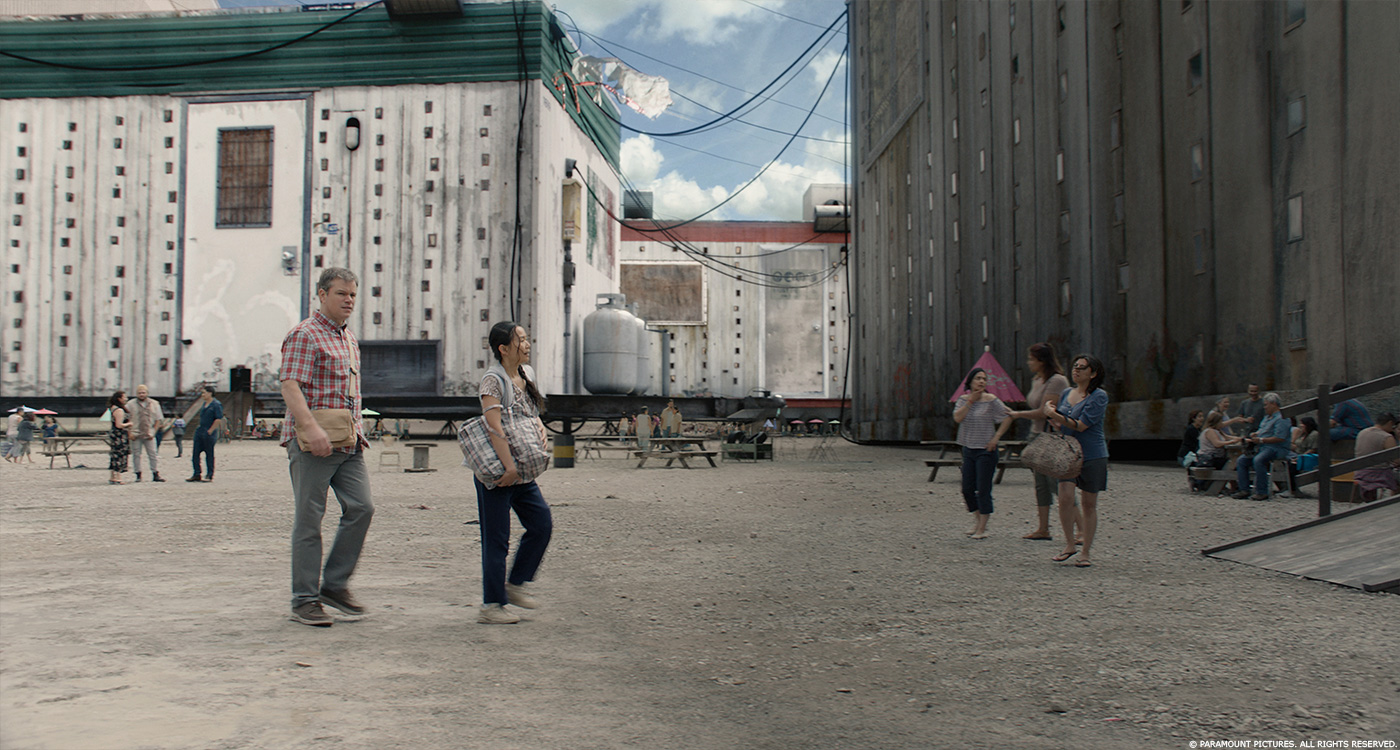James E. Price is working in the visual effects for more than 27 years. As a VFX supervisor, he took care of the effects of many films such as AUSTRALIA, THE A-TEAM, PACIFIC RIM and ROBOCOP.
How did you get involved on this show?
I first met Alexander in 2009 when the movie was at Fox. I was invited to Alexander’s office to read the screenplay and we had lunch afterward. I was really excited about how the visual effects were subtle and played a crucial supporting role for the story – I told Alexander that the movie was a dream job for that reason. Over the course of the next 7 years, Alexander and I kept in touch and when the movie got going again I signed up immediately.
How was your collaboration with director Alexander Payne?
Collaborating with Alexander was really great. Even though he hadn’t had a lot of experience with visual effects, we was able to articulate his desires very clearly. Absolute realism was first and foremost in his mind, but he was also very concerned with creating an environment where the actors could understand the process so they could deliver their best performances, and also one where he himself (Alexander) was grounded and could make the movie the way he wanted to without being fettered by the technology of visual effects. He challenged me to – his words – “make me feel like I’m making an ordinary movie”. So our solutions to the visual effects were based not just on what was strictly technologically necessary, but also on what would make the filmmakers comfortable and confident.
What was his approach and expectations about the visual effects?
One important expectation from the beginning was that there would be no digital doubles. Alexander is all about performance, and we knew we’d always be photographing actors in VFX shots so the true performance could come through.
That’s his first big VFX feature. How did you help him with this aspect?
One of the reasons that Alexander is so great to work with – beside the fact that he’s a really kind and funny guy – is that he works hard to understand how each department contributes to the movie as a whole. So he really dove in and worked with us as we explored how to achieve the visual effects. He always sought our input creatively as well as technically and really worked to understand how our work would affect his. We started by reviewing decades of scaled-down humans in movies to see what we responded to and why, and from there we crafted our solutions.
How did you organize the work with your VFX Producer Susan MacLeod?
The collaboration between VFX Producer and VFX Supervisor is such a symbiotic one that the responsibilities can overlap, but in general we stuck with the traditional definitions of the roles. Susan was great about managing the budget and working with the producing teams at the vendors, and I focussed on the technical and creative aspects of the visual effects.
Can you tell us more about the previz and postviz work?
We knew from the beginning that previz would be crucial to the efficiency of the movie, and not just in terms of managing the shot count – we really needed previz because of the scales involved. Our small characters were 1/14 size, which meant that to shoot from 14 times farther away when we were shooting a small character. That 14x scale becomes really diabolical really quickly – 10 feet becomes 140 feet, and before you know it you’re either outside the stage or above the ceiling. So all of that had to be set up ahead of time so we could actually achieve the shots, and previz was the answer to that.
What was your methodology to create these shots?
Our methodology for the mixed-scale shots was a tried-and-true one – we shot the big person first and took a lot of measurements, then we scaled those measurements 14x and shot a greenscreen element of the small person at a later date.
What was the main challenge with the miniaturization?
Loosely speaking, the main challenge was the integration – the timing, the lighting, the eyelines, the perspective. It all worked together to make the shot succeed, and any one of those things could make the shot fail. So we worked very hard to duplicate and scale everything about the large setup so the small one worked.
How did you manage the lighting aspect?
We took copious notes and reference photographs, and we also measured everything very accurately using surveying equipment. We also created a twist on the classic “CGI grey ball” by creating a small 2-inch diameter ball and a 14x bigger (28-inch diameter) ball. We then shot a reference pass of the small ball when we shot the big person. When the time came to shoot the small person, we put the large ball in the shot and did a side-by-side comparison with the small ball using the video assist. Then we adjusted the lighting until the two balls matched, and voila! – the lighting worked. It was really great because you could see right away when we did a temp comp on the set that the composite would work.
How did you handle the eye-line and the interactions for the miniaturization shots?
In addition to surveying the lighting and camera positions, we also surveyed the positions of the actors. For shots with big and small people, we placed a 3D-printed doll in the shot to use as an eyeline for the big person. We then surveyed the eye position of the doll. When we shot the other side, we created a 14x scale “face” out of tape and placed it on a very tall stand. That was we duplicated both the distance and the angle that the small person was supposed to be looking and the actor had a solid mark for their performance.
How did you work with the art department to create the miniaturized environments?
We felt from the beginning that overscale props and sets weren’t really going to work. As good as they are, they just don’t match the real world level of detail you see when you scale something up. So we built what we called “proxy sets” that were essentially oversize props or sets that provided the proper interaction for the actors and the proper bounce light. The cracker box on the kitchen counter that Dave Johnson is sitting on is a good example. We built that cracker box oversize and even matched the label of the box, but we ultimately rotoscoped the character off the box and composited him on to macro photography of a real, normal size box.
Can you explain in detail about the creation of Leisureland and the Norway colony?
To create Leisureland we first consulted with an urban planner to understand exactly how the community would be designed and how it would function. Alexander is a very logical director, and I think that’s why his movies resonate so well with the audience – people can understand the situations and see themselves in them, and we wanted Leisureland to be no different. We wanted the audience to get a feel for what it would be like to live there and to accept it as reality, not as something far-fetched and fantastical. So once we established those principles, we then had to build the thing. We shot a lot of photo reference of shopping malls and large homes, and then created digital models to fit our layout and match our overall aesthetic. We then added all the other details such as the wall, net, masts, and gondolas, traffic, people, etc. It was a huge digital asset.
The Norway environments were also predominantly digital but they were anchored with Norway background plates for the distant landscape and a Toronto set built on an exterior location for the foregrounds.
I will also add that there was a hidden challenge in all of these environments, and really in all of the VFX in DOWNSIZING. That was that Alexander never wanted to draw attention to the visual effects. Whereas in a more traditional effects movie you might have the VFX showing off the scale differences, Alexander wanted the audience to understand the situation the characters were in, but then we wanted to forget about it and just stay caught up in the story. There was a real risk of the VFX upstaging the story if we didn’t get the right balance, so we made sure not to let that happen.
What was the main challenge with these environment seen at macro level?
Well, the use of the term macro is important and it actually speaks to the different challenges of each environment. We had a model for our photography that we called “big camera / small camera’, which meant that we would treat the shots as if they were either shot by a “big camera” when we were big, or a “small camera” – a camera that is the same size as the small subjects – when we were small. That meant that we only had a macro look when we were shooting something small with a big camera – like Dave on the cracker box. When we were in Leisureland or in Norway, we were shooting with a small camera, so nothing looked macro. It just looked normal, although in the case of Norway the plants and insects looked big. So in the case of Leisureland, the challenge was similar to any other digital environment in terms of level of detail, but in Norway the level of detail of the plants had to be much higher because we were seeing them much more closely. And in terms of a macro level of detail in other scenes, like the cracker box in the kitchen or the lawyer’s papers, we solved that by shooting actually macro photography of those environments.
Which one was the most complicated to created and why?
They were both different challenges – Leisureland was architectural and incredibly detailed, and Norway was organic and incredibly detailed. But overall, Leisureland was the bigger challenge because it was both a design and execution challenge. As I mentioned, the layout of Leisureland had to follow established urban planning practices so we worked with consultants to identify what those were, and we then had to tailor those rules to the needs of the story. And the level of detail was just incredible. We used the same model for the wide shots from the viewing corridor as we did for the shots down in Leisureland, so it had to hold up from many different distances and angles.
Can you tell us how you choose the various VFX vendors?
We knew we wanted a larger vendor to handle the big environments such as Leisureland and Norway, and ILM was a good fit for that. We also wanted another vendor to take some of the load off of ILM by having another vendor do a selection shots that were composites of Leisureland seen outside of windows. Framestore was a good fit for that. ILM used Rodeo FX in Montreal and we used Framestore in Montreal so they were able to share assets and easily discuss their various solutions and approaches. The whole show was really collaborative in that way. Then we also used Lola for some bald-cap touchups and other cosmetic work. We also had some overflow work and brought on Atomic Fiction and Shade VFX and had a great experience with them as well.
Can you tell us more about your collaboration with their VFX supervisors?
Other than the overflow work, our plan was to bring the VFX teams on early, before the shoot, so we could work together to find solutions. In general, the production-side team handled the on-set work, although for key sequences we had the vendor VFX supervisor come to the set. There is no substitute for being on set when your sequence is shot, so I like to have a few key vendor people travel to set whenever I can.
The vendors are all around the world. How did you proceed to follow their work?
We used the internet, the telephone, and cineSync, along with some good old-fashioned visits to the facilities. So much of the VFX industry is global now and especially with the desire for rebates the work is more often than not done remotely. I find it’s really important to keep the work personalized by visiting in person regularly. Plus it’s really efficient and fun to sit down together in person with the supervisors and artists and figure out solutions.
Which sequence or shot was the most complicated to create and why?
There is one shot in the High School Reunion scene that was incredibly complicated, although it may not look like it. It’s a quick shot of Dave and Carol being carried past the camera in the “carry box”, the contraption that protects them when they go from place to place. We first shot the actor carrying the box with just dolls inside the box. Then Alexander picked a take and we tracked the motion of the box and applied that motion to a 14x bigger box set that was attached to a motion base with a rotator. The prop carry box was about 1 foot by 1 foot by 1 foot, which meant that the oversize box was 14 feet by 14 feet by 14 feet, so it was big! We then had to also synchronize and motion control a cable cam – the scaled distances were huge so a crane or dolly wouldn’t work – to duplicate the travel of the box and the original camera move. So it was multiple separate pieces of equipment that had to be triggered at once to duplicate the move, and the original background had to be shot in such a way that the mechanical limits of the gear and the size of the stage wouldn’t be exceeded. It required a ton of prep and collaboration, as well as a ton of gear and stage space, so needless to say production was very interested to see the result. When we finally shot it and did a live mix on stage, you could see immediately that everything was working and the shot would work. Very satisfying!
What is your favorite shot or sequence?
I really like the sequence when the small people are traveling from the port to the village in Norway and we see all this magical beauty of the environment as seen from their small POV. It was really inspiring to be on location in Norway, and to capture that beauty and recreate it digitally was really special.
What is your best memory on this show?
The entire experience was really special but for me it was seeing the first rough cut of the movie that really moved me. To have started working on it 7 years earlier and to finally see it all coming to life was really great. I can only imagine how Alexander must’ve felt!
How long have you worked on this show?
Almost two years since we started actually making the movie, but as I mentioned I first met Alexander about the movie in 2009.
What’s the VFX shots count?
625 shots.
What was the size of your on-set team?
On main unit, it was Susan and myself and a data wrangler, sometimes two. There was also a small 2nd unit that had a data wrangler and a VFX supervisor, either myself if I was available or one of the vendor supervisors.
What is your next project?
Not sure yet! I’m currently taking some time to be with family and reading a few scripts. I must say that the experience on DOWNSIZING was really energizing and made me even more excited about visual effects and filmmaking. It was such a pleasure to work with such a talented and professional team and to produce work that was so integral to the story and mood of the movie. I loved it!
A big thanks for your time.
© Vincent Frei – The Art of VFX – 2018


